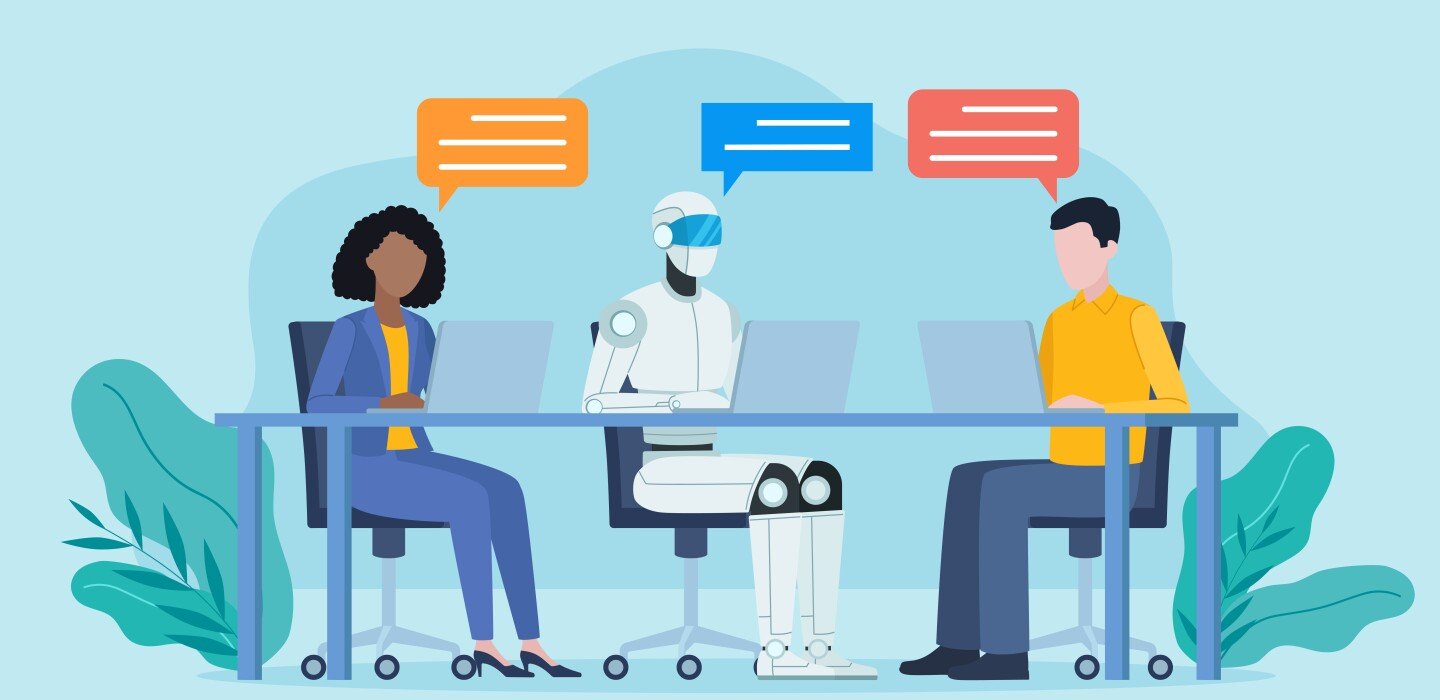Tools & Platforms
Half of Students Say AI Is Most Important Skill They’ll Learn in College

Half of students pursuing higher education in the United States said that mastering artificial intelligence (AI) is the most important skill they expect to acquire during their college years, according to a new Grammarly survey.
The survey of 2,000 students enrolled in degree programs in U.S. colleges highlighted the rapid adoption of AI technology on campuses and its perceived necessity for future success.
Why It Matters
AI has quickly shifted from a theoretical concept to a foundational aspect of education and workforce readiness.
The trend comes amid debate among educators and policymakers over how best to integrate AI into academic environments. Advocates for AI education argue that such skills are vital for navigating an increasingly automated world, while critics point to challenges like academic honesty, privacy and the need to balance digital tools with human interaction.
RICK FRIEDMAN/AFP via Getty Images
What To Know
Roughly 62 percent of students see responsible AI use as essential for their future careers, according to the Grammarly report, indicating that AI literacy is emerging as a core component of higher education’s value proposition.
Nearly three-quarters of respondents reported that their schools have established AI usage policies, reflecting how students and institutions are adapting to new realities brought about by rapid technological change.
The survey, which was conducted by Grammarly and Talker Research based on responses from 2,000 college students from July 1-9, showed that the vast majority of college students are already using AI in their academic lives.
While 87 percent of participants said they already use AI for academic purposes, averaging five hours per week, 90 percent use AI tools for non-academic life activities.
“Most products like ChatGPT, Grok, Gemini have a free offering and low barriers to use, encouraging exploration,” Darren Kimura, CEO of AI Squared, told Newsweek.
“Additionally, the capability that AI can produce today like coding tasks, writing or collaboration, align closely with the work of mid‑wage technical and creative professionals, increasing its use in the workplace.”
Despite widespread AI usage, 55 percent of students reported feeling they navigate AI without sufficient guidance. Nearly half (46 percent) expressed concern about possible repercussions for improper use, with 10 percent indicating they had experienced issues related to AI use at school.
Students used AI for a variety of academic needs, including brainstorming ideas (49 percent), grammar and spelling checks (42 percent) and understanding difficult concepts (41 percent). Others leveraged AI for tasks they might be embarrassed to discuss in person (29 percent) or for life advice (25 percent).
Institutional responses to AI use varied widely.
Of schools with policies in place, 30 percent permitted AI use for specified assignments, 31 percent allowed general use with proper citation, and 32 percent banned AI outright. Despite the rules and 69 percent of students saying professors discussed them, only 11 percent of students reported being encouraged to use AI in their studies.
A different 2024 Global AI Student Survey by the Digital Education Council found that 86 percent of international university students use AI in their studies, with ChatGPT, Grammarly and Microsoft Copilot listed among the most frequently used tools.
However, workforce experts caution against AI misuse for the next generation of workers.
“AI can be a powerful tool, a supplement to the existing workforce. But only if it’s paired with human judgment, ethics and a worker-focused lens,” HR consultant Bryan Driscoll told Newsweek. “The real skill isn’t just AI anywhere and everywhere. It’s knowing when AI isn’t the right fit.”
What People Are Saying
Darren Kimura, CEO of AI Squared, told Newsweek: “AI today is really about task augmentation but not full automation, meaning that it increases the productivity of humans without yet removing them from the equation.”
HR consultant Bryan Driscoll told Newsweek: “AI is changing lots of things and helping put some things in perspective. It’s also changing the workplace faster than colleges can keep up. But the danger is treating AI like a magic bullet. If we keep funneling students into tech skills without teaching them how to think critically, collaborate and advocate for themselves in a workforce increasingly run by algorithms, we’re setting them up to be overworked, replaceable and underpaid.”
What Happens Next
As AI continues to proliferate across campuses, academic institutions face pressure to formalize guidance, enhance faculty and student training, and update curricula to reflect the technology’s evolving role.
“There will likely be a major workforce reskilling as AI will replace entry level jobs. I predict a boon for community colleges and universities as workers look to reskill,” Kimura said. “Managers must learn how to manage AI workers as they once used to have to manage human workers.”
Tools & Platforms
AI, Workforce and the Shift Toward Human-Centered Innovation

Artificial intelligence has been in the headlines for years, often linked to disruption, automation and the future of work. While most of that attention has focused on the private sector, something equally significant has been unfolding within government. Quietly, and often cautiously, public agencies are exploring how AI can improve the way they serve communities, and the impact this will have on the workforce is only just beginning to take shape.
Government jobs have always been about service, often guided by mission over profit. But they’re also known for process-heavy routines, outdated software and siloed information systems. With AI tools now capable of analyzing data, drafting documents or answering repetitive inquiries, the question facing government leaders isn’t just whether to adopt AI, but how to do so in a way that enhances, rather than replaces, the human element of public service.
A common misconception is that AI in government will lead to massive job cuts. But in practice, the trend so far leans toward augmentation. That means helping people do their jobs more effectively, rather than automating them out of existence.
For example, in departments where staff are overwhelmed by paperwork — think benefits processing, licensing or permitting — AI can help flag missing information, route forms correctly or even draft routine correspondence. These tasks take up hours of staff time every week. Offloading them allows employees to focus on more complex or sensitive issues that require human judgment.
Social workers, for instance, aren’t being replaced by machines. But they might be supported by systems that identify high-risk cases or suggest resources based on prior outcomes. That kind of assistance doesn’t reduce the value of their work. It frees them up to do the work that matters most: listening, supporting and solving problems for real people.
That said, integrating AI into public workflows isn’t just about buying software or installing a tool. It touches something deeper: the culture of government work.
Public agencies tend to be cautious, operating under strict rules around fairness, accountability and transparency. Those values don’t always align neatly with how AI systems are built or how they behave. If an AI model makes a decision about who receives services or how resources are distributed, who’s accountable if it gets something wrong?
This isn’t just a technical issue, but it’s about trust. Agencies need to take the time to understand the tools they’re using, ask hard questions about bias and equity, and include a diverse range of voices in the conversation.
One way to build that trust is through transparency. When AI is used to support decisions, citizens should know how it works, what data it relies on, and what guardrails are in place. Clear communication must be visible and oversight goes a long way toward building public confidence in new technology.
Perhaps the most important piece of this puzzle is the workforce itself. If AI is going to become a fixture in government, then the people working in government need to be ready.
This doesn’t mean every employee needs to become a coder. But it does mean rethinking job roles, offering training in data literacy, and creating new career paths for roles like AI governance, digital ethics and human-centered design.
Government has a chance to lead by example here. By investing in employees, not sidelining them, public agencies can show that AI can be part of a more efficient and humane system, one that values experience and judgment while embracing new tools that improve results.
There’s no single road map for what AI in government should look like. Different agencies have different needs, and not every problem can or should be solved with technology. But the direction is clear: Change is coming.
What matters now is how that change is managed. If AI is used thoughtfully — with clear purpose, oversight and human input — it can help governments do more with less, while also making jobs more rewarding. If handled poorly, it risks alienating workers and undermining trust.
At its best, AI should serve the public interest. And that means putting people first, not just the people who receive services, but also the people who provide them.
John Matelski is the executive director of the Center for Digital Government, which is part of e.Republic, Government Technology’s parent company.
Tools & Platforms
SpamGPT Is the AI Tool Fueling Massive Phishing Scams

How Does SpamGPT Work?
SpamGPT works like any email marketing platform. It offers tools like SMTP/IMAP email server, email testing, and campaign performance monitoring in real time. There’s also an AI marketing assistant named KaliGPT, which is built directly into the dashboard for assistance.
However, where it differs from email marketing platforms is that it is specifically designed for creating spam and phishing emails to steal information and financial data from users.
More specifically, SpamGPT is “designed to compromise email servers, bypass spam filters, and orchestrate mass phishing campaigns with unprecedented ease,” according to a report from Varonis, a data security platform.
Tools & Platforms
AI-Enabled Technology Automates and Optimizes Airport Parking Systems

Vehicle parking accounts for the top source (24%) of non-aeronautical revenue at airports, ahead of retail concessions, real estate investments, and rental car fees, according to the Airports Council International.
At the same time, aging parking access and revenue control equipment like ticket machines and pay stations fail regularly after years of operation. This results in operational cost increases, potential revenue leakage from downtime, and negative impacts on customer satisfaction due to traffic build up at entry and exit. For busy airport executives, these issues are easy to overlook and not prioritize because parking revenue is predictable and significant. However, those who do prioritize parking can quickly find a meaningful area of value creation in terms of revenue and customer experience improvement.
Artificial intelligence (AI) can help airport executives realize this untapped value by transforming airport parking into a hands-off operation that is always on, never breaks down, is more accurate and financially accountable, and provides a better parking experience for airport customers.
AI-enabled parking management systems can improve conditions for operational and landside managers by eliminating the need to:
● Schedule and pay staff to operate payment booths.
● Schedule and pay maintenance and repair staff for traditional fee-collection ticket machines and kiosks.
● Reroute parking traffic when lanes unexpectedly need to close or back up from slow operation.
For airport executives and managers, AI can provide better predictability and control of parking revenue through more accurate vehicle and fee identification. It can also replace electromechanical fee-collection machines and kiosks, which disrupt automatic collections and require significant labor expense when they break down.
In addition, AI has the power to attract more airport parkers by automating every aspect of airport parking — from reserving a spot to paying — consistently and reliably.
How does an AI-enabled parking system work?
An AI-enabled parking system works by creating a digital fingerprint of each vehicle that includes necessary data about the vehicle. Combined hardware and software identify the vehicle instantly via its digital fingerprint as it approaches a parking facility, prompting actions that enable the driver to enter, exit, and pay without stopping. Vehicle identification, fee calculation, and the payment transaction all happen in the background, without intervention from drivers or airport staff.
Dayton International Airport, San Antonio International Airport, Northwest Arkansas National Airport, and Aspen/Pitkin County Airport all recently adopted the Metropolis for Airports AI-enabled modern parking system.
It’s an upgrade that is paying off at Dayton International Airport (DAY): Growing popularity and consistently reliable collections have lifted in-plane revenue per passenger from $10 to $13.14.
“It makes [parking] seamless for our customers,” Gil Turner, Director of DAY, says of Metropolis. “They just drive up. They don’t have to roll the window down. They pull up, the system recognizes the vehicle, takes the license plate information, and they’re able to go right in and park. And when they leave, there’s no interaction with the booth person. So it’s all great. I know that flying can be a frustrating process, so when you have a system, you come home, you can just leave and don’t have to have any stress or worries. I mean, it just helps the customer.”
The Metropolis system runs in the cloud and uses computer vision, license plate recognition (LPR), camera-based hardware, machine learning, and AI to automate parking events, as well as parking data collection. The system requires no upfront capital investment from airports and integrates with existing gate equipment.
A driver registers once and is ready to go. Here’s how it works:
● When a car enters the lot, the computer vision-enhanced camera captures the license plate. Intelligent software then recognizes the car as a Metropolis user and prompts the entry gate.
● When the car leaves, the system again recognizes the license plate, calculates the fee, charges the driver’s selected payment method, and prompts the exit gate to open.
● The system automatically sends a receipt to the driver via email or text.
● Data on the parking event is stored and made available.
In addition to automation benefits, AI-enabled parking systems provide real-time data that is highly valuable for more informed staffing, lane management, and lot maintenance planning. This data can also help airport managers and directors respond to customer input and demand in real time, such as instituting dynamic pricing.
And as an intelligent system, an AI-enabled parking management solution becomes faster and more accurate with each data input as it continues to learn, which provides a consistently superior and more predictable experience for parking users. Combined with reservations and dynamic pricing, AI can increase parking revenue because when parking is easier and priced competitively, drivers are more likely to choose an airport lot or garage over an alternative, such as an off-airport facility or ride-hailing service.
Elevate airport parking with AI
Metropolis operates a network with over 4,500 parking locations in more than 50 countries and 350 cities, including over 80 airports. More than 18 million people are Metropolis members.
Relates DAY’s Manager of Business Development, “Metropolis was part of a competitive bid process, and one of the things that stood out between them and the others who were in the process was the technology but also how they implemented it and their focus on the positive impacts to the customer. Positive customer service leads to additional revenue, happier passengers, and everything that we’re looking for here at Dayton.”
He adds, “On the very first day Metropolis rolled out, I said I’m going to go test this technology. I tested each of the parking lots. Each one of them worked perfectly, and so the fact is that our passengers can now get that same experience without having to roll down their window and wait in line. They just access our parking. Our slogan is easy to and through, and [the Metropolis solution] is really the definition of that slogan.”
When an airport joins the Metropolis network, the company installs its computer vision cameras and maintains them at no cost. Metropolis also helps with systems integration with existing gates. Then, the payment model shifts to a set-up fee and subscription, as is common for cloud-hosted software services. And like other software-based, consumer-facing brands, Metropolis is constantly improving its product with updates that are automatically deployed across the network.
The bottom line is that airport parking facilities that use Metropolis are faster, easier, more convenient, and less congested than those using traditional systems.
Are you ready to elevate your airport’s parking? Talk to Metropolis today.
-

 Business2 weeks ago
Business2 weeks agoThe Guardian view on Trump and the Fed: independence is no substitute for accountability | Editorial
-
Tools & Platforms1 month ago
Building Trust in Military AI Starts with Opening the Black Box – War on the Rocks
-

 Ethics & Policy2 months ago
Ethics & Policy2 months agoSDAIA Supports Saudi Arabia’s Leadership in Shaping Global AI Ethics, Policy, and Research – وكالة الأنباء السعودية
-

 Events & Conferences4 months ago
Events & Conferences4 months agoJourney to 1000 models: Scaling Instagram’s recommendation system
-

 Jobs & Careers2 months ago
Jobs & Careers2 months agoMumbai-based Perplexity Alternative Has 60k+ Users Without Funding
-

 Podcasts & Talks2 months ago
Podcasts & Talks2 months agoHappy 4th of July! 🎆 Made with Veo 3 in Gemini
-

 Education2 months ago
Education2 months agoMacron says UK and France have duty to tackle illegal migration ‘with humanity, solidarity and firmness’ – UK politics live | Politics
-

 Education2 months ago
Education2 months agoVEX Robotics launches AI-powered classroom robotics system
-

 Funding & Business2 months ago
Funding & Business2 months agoKayak and Expedia race to build AI travel agents that turn social posts into itineraries
-

 Podcasts & Talks2 months ago
Podcasts & Talks2 months agoOpenAI 🤝 @teamganassi

















